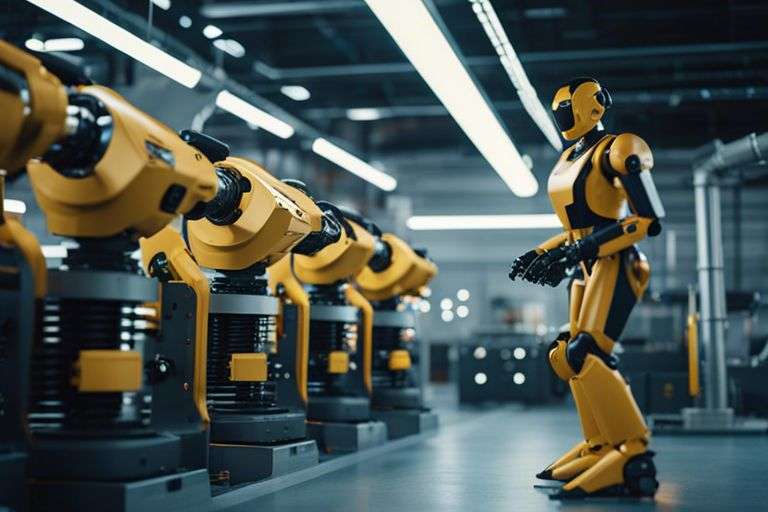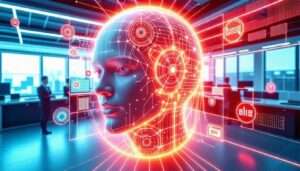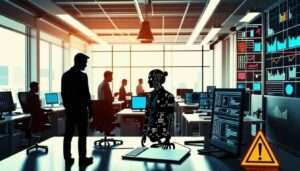You may not realize it, but the world of industrial automation is constantly changing and evolving thanks to the power of advanced artificial intelligence technologies. In this article, you will discover the top AI technologies that are revolutionizing the industrial sector and transforming the way businesses operate. From machine learning to robotic process automation, these cutting-edge advancements are not only increasing efficiency and productivity but also improving safety standards and reducing operational costs. By understanding and implementing these game-changing AI technologies into your industrial processes, you can position yourself ahead of the competition and reap the rewards of a more streamlined and innovative operation.
Key Takeaways:
- AI-powered predictive maintenance can help industries reduce maintenance costs and improve equipment reliability by detecting potential failures before they occur.
- Machine learning algorithms can process vast amounts of data to optimize production processes, improve product quality, and reduce waste in industrial automation.
- Computer vision technology is changing the way industrial automation systems manage quality control, inspection, and safety, by enabling machines to recognize and interpret visual information.
- Natural language processing is streamlining communication between human operators and industrial automation systems, making it easier to monitor and control manufacturing processes in real-time.
- Robotic process automation is automating repetitive tasks in industrial settings, such as data entry and inventory management, to enhance operational efficiency and productivity.
Machine Learning and Data Analytics
While traditional industrial automation systems have relied on pre-programmed instructions to carry out tasks, the advent of machine learning and data analytics has revolutionized the way industrial processes are managed. Through the power of artificial intelligence, machine learning algorithms can analyze large volumes of data to identify patterns and make predictions, enabling you to optimize processes and make more informed decisions.
Predictive Maintenance and Optimization
One of the most significant applications of machine learning in industrial automation is predictive maintenance. By analyzing historical data from sensors and equipment, machine learning algorithms can accurately predict when a machine is likely to fail, allowing you to schedule maintenance proactively and avoid costly downtime. Additionally, machine learning can help you optimize your operations by identifying inefficiencies and recommending adjustments to improve productivity and reduce waste.
Quality Control and Defect Detection
When it comes to ensuring the quality of your products, machine learning and data analytics play a crucial role in defect detection. By analyzing images and sensor data, machine learning algorithms can quickly identify defects in products, allowing you to take corrective action before they reach the market. This can help you minimize waste and maintain the high quality standards that your customers expect.
Robotics and Cobots
Clearly, robotics and collaborative robots, or cobots, are revolutionizing industrial automation. Industrial robots are being increasingly used to automate tasks such as welding, painting, assembly, and material handling. These robots are equipped with advanced sensors and vision systems that allow them to work alongside human workers, making them more efficient and flexible in the manufacturing process.
Enhanced Manufacturing Processes
With robotics and cobots, your manufacturing processes are greatly enhanced. The use of robots in industrial automation has led to improved product quality, increased production speed, and reduced downtime. Robots can work around the clock without fatigue, ensuring consistent quality and output. Additionally, they can handle hazardous tasks that may pose a risk to human workers, keeping you and your employees safe. Robotics and cobots have the potential to transform your manufacturing processes, leading to increased productivity and cost savings.
Human-Machine Collaboration
Robots and cobots also enable human-machine collaboration in industrial automation. They can be programmed to work alongside human workers, taking over repetitive or physically demanding tasks and allowing humans to focus on more complex and creative aspects of production. This collaboration improves overall efficiency and productivity while reducing the risk of workplace injuries. By integrating robotics and cobots into your industrial automation processes, you can achieve a harmonious and productive working environment. This collaboration between humans and machines opens up new possibilities for optimizing your workflow and achieving better results.
Computer Vision Systems
Unlike traditional industrial automation systems, AI-powered computer vision systems have the ability to replicate human vision and perception, enabling machines to interpret visual information and make decisions based on that data. This technology is revolutionizing industrial automation by providing a range of capabilities, from real-time monitoring and control to advanced inspection and sorting.
Real-Time Monitoring and Control
Computer vision systems offer real-time monitoring and control capabilities that allow you to oversee the industrial processes and make immediate adjustments as needed. With these systems, you can track the movement of raw materials, products, and equipment on the factory floor, ensuring smooth operations and identifying potential issues before they escalate. You can also remotely monitor multiple locations simultaneously, giving you unprecedented visibility and control over your industrial operations.
Advanced Inspection and Sorting
Computer vision systems enable advanced inspection and sorting processes by analyzing visual data to detect defects, measure dimensions, and classify products with unprecedented accuracy. These systems can automatically identify and sort items based on predefined criteria, reducing the need for manual labor and minimizing the risk of errors. They can also inspect products at high speeds and across large volumes, ensuring that only the highest-quality items are released into the market.
The future is here: Artificial Intelligence robots transforming industries
Real-time monitoring and control capabilities enable you to oversee industrial processes and make immediate adjustments as needed.
Computer vision systems provide advanced inspection and sorting processes with unprecedented accuracy, high speed, and large volume capabilities.
Natural Language Processing (NLP) and Voice Interfaces
For industrial automation, Natural Language Processing (NLP) and voice interfaces are revolutionizing the way humans and machines interact. According to a report by Visual Capitalist, the potential for AI automation is ranked highest in industries such as manufacturing and transportation, making NLP and voice interfaces crucial in advancing operational efficiency and streamlining human-machine interactions Ranking Industries by Their Potential for AI Automation.
Streamlining Human-Machine Interactions
NLP and voice interfaces enable you to communicate with machines in a more natural and intuitive way. You can issue voice commands to control equipment, request information, or give instructions, making it easier and more efficient to interact with complex industrial systems. This not only enhances your overall experience but also minimizes the need for extensive training in using traditional user interfaces, increasing productivity and reducing human errors.
Improving Operational Efficiency
By harnessing NLP and voice interfaces, you can streamline your operational processes by enabling quick access to information and control over machinery. This can result in improved decision-making and efficiency gains as you are able to process and act on information more rapidly, ultimately enhancing the performance of your industrial automation systems.
To wrap up
As you can see, there are numerous AI technologies that are rapidly transforming industrial automation. From machine learning and computer vision to autonomous robots and predictive maintenance, these technologies are revolutionizing the way manufacturing and industrial processes are managed and operated. By incorporating these AI technologies into your industrial automation systems, you can significantly improve efficiency, productivity, and safety within your facilities. It’s important to stay up-to-date with the latest advancements in AI in order to remain competitive and continue to streamline your operations. Embracing these technologies can give you a clear advantage in the modern industrial landscape.
FAQ
Q: What are the top AI technologies transforming industrial automation?
A: The top AI technologies transforming industrial automation include machine learning, computer vision, natural language processing, robot process automation, and predictive maintenance.
Q: How does machine learning impact industrial automation?
A: Machine learning enables industrial automation systems to learn from data, identify patterns, and make decisions without human intervention. It improves production efficiency, reduces downtime, and enhances product quality.
Q: What is the role of computer vision in industrial automation?
A: Computer vision technology allows machines to interpret and understand visual information, enabling tasks such as quality control, object recognition, and autonomous navigation in industrial settings.
Q: How does natural language processing benefit industrial automation?
A: Natural language processing enables machines to understand and respond to human language, facilitating human-machine interactions, predictive analysis, and automated report generation in industrial automation processes.
Q: What is the significance of predictive maintenance in industrial automation?
A: Predictive maintenance uses AI to analyze equipment data and predict potential failures, allowing for proactive maintenance interventions, minimizing unplanned downtime, and optimizing operational efficiency in industrial automation.




